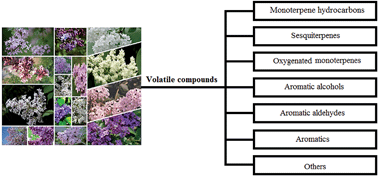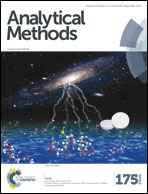Performance assessment of solvent extraction coupled with gas chromatography-mass spectrometry for the analysis of volatile components from Syringa flowers
Abstract
Using gas chromatography-mass spectrometry (GC-MS) as a means of separation and identification, a solvent extraction (SE) method was first developed and used for isolating and concentrating the volatile components from Syringa flowers. Its performance was assessed by comparing it with headspace solid-phase microextraction (HS-SPME) technology, which is generally recognized as an effective means for trapping volatile substances. Four main influencing parameters, the solvent, solvent volume, extraction time and heating temperature, were optimized in order to achieve high extraction efficiency. The experimental results show that both methods exhibit their own extraction performance for Syringa emodi Wall. Among a total of 21 substances that were separated, 17 substances were identified using these two methods. Of these, 15 were identified by SE and 12 by HS-SPME. Among these 17 substances, 10 were identified by both methods and seven only by one method: five by SE and two by HS-SPME. Both methods also give different relative contents of the substances involved. These comparative results show that SE has an ability to trap the volatile components that is even better than that of HS-SPME in this case. Moreover, this method was also applied to 15 other varieties of Syringa flowers.


 Please wait while we load your content...
Please wait while we load your content...